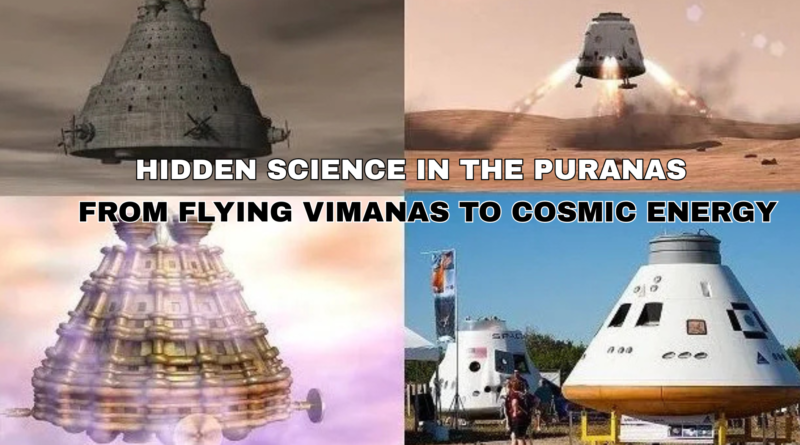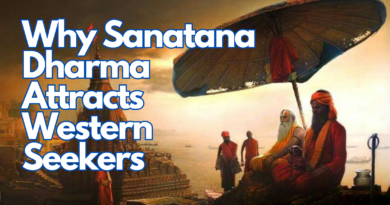HIDDEN SCIENCE IN THE PURANAS: FROM FLYING VIMANAS TO COSMIC ENERGY
The Puranas, a collection of ancient Hindu texts, are often read as mythological tales filled with gods, demons, and extraordinary events. Yet, when examined with an open mind, these scriptures seem to hide layers of scientific knowledge that were far ahead of their time. From descriptions of flying machines to concepts of cosmic energy, the Puranas suggest that our ancestors may have understood more about the universe than we usually credit them with.
The Enigma of Vimanas
One of the most fascinating aspects of the Puranas is the description of Vimanas, aerial vehicles used by gods, sages, and even kings. Texts like the Vaimanika Shastra, often linked to Purana-based traditions, detail machines that could soar in the sky, move in multiple directions, and even travel to other realms.
Descriptions mention metals resistant to high temperatures, mechanisms powered by energy sources, and the ability to become invisible. While many historians dismiss these accounts as symbolic or imaginative, modern readers cannot help but notice their similarity to airplanes, spacecraft, and stealth technology. Could these be remnants of forgotten scientific achievements or symbolic metaphors pointing to advanced knowledge?
Concepts of Time and Space
The Puranas also contain intricate descriptions of time cycles that align surprisingly well with modern cosmology. For instance, the idea of Yugas vast cosmic cycles spanning thousands or even millions of years mirrors today’s scientific understanding of geological and astronomical timescales.
In texts like the Bhagavata Purana, the universe is said to undergo repeated cycles of creation and destruction. This cyclical view resembles modern theories of the expanding and contracting universe. Interestingly, the speed of time is also portrayed as relative time passes differently for gods and humans. This concept parallels Einstein’s theory of relativity, which shows that time is not absolute but depends on velocity and gravity.
Cosmic Energy and Subtle Forces
Another remarkable feature in the Puranas is the explanation of cosmic energy. Scriptures often speak of Prana the vital life force that permeates everything. This is not just spiritual philosophy but can be compared to the modern idea of energy fields.
The Puranas describe energy centers in the body (chakras), cosmic vibrations, and sound as a source of creation. The concept of Nada Brahma “the universe is sound” echoes in modern physics, where vibrations and frequencies form the basis of matter and energy. Today’s scientists recognize that the entire cosmos is a field of energy interactions, much like what the ancient seers suggested thousands of years ago.
The Mystery of Atomic and Subatomic Ideas
Long before modern science discovered the atom, the Puranas and other ancient texts spoke of the anu (atom) and paramanu (subatomic particle). These were described as indivisible, invisible, and the building blocks of matter. This understanding resonates with atomic theory and quantum physics.
Furthermore, the idea that the universe is made up of countless small particles and energies was deeply embedded in Purana literature. Even the notion that matter can transform back into energy is hinted at, aligning with Einstein’s famous equation, E = mc².
Astronomy Hidden in Stories
Many Purana stories are rich in astronomical symbolism. The tale of Samudra Manthan (churning of the cosmic ocean) is often seen as a metaphor for the movement of celestial bodies and the balance of forces in the universe. The references to planetary alignments, eclipses, and star movements in the Puranas suggest that ancient scholars had a keen awareness of astronomy.
Some descriptions even discuss multiple universes (aneka brahmanda), each with its own time flow and laws—an idea not far from today’s multiverse theory.
Relevance for the Modern World
The Puranas may not provide literal blueprints for spacecraft or physics equations, but their symbolic and descriptive nature holds great value. They inspire scientists and thinkers to explore ideas beyond conventional boundaries. By blending mythology with cosmic principles, these texts remind us that science and spirituality were never truly separate in ancient thought.
For the modern world, these stories serve two purposes: first, as a cultural treasure that reflects the imaginative and intellectual capacity of our ancestors; second, as a spark for innovation, encouraging us to think beyond what is currently known. Whether Vimanas truly existed or not, the fact that they were envisioned shows that human imagination has always reached for the skies.
Conclusion
The Puranas are more than mythological tales; they are windows into the hidden science of the ancient world. From the flying Vimanas that resemble futuristic aircraft to the deep insights into cosmic energy, time, and atomic structure, these texts reveal an extraordinary depth of knowledge.
While modern science continues to test, measure, and prove these concepts, the Puranas invite us to see the universe as a grand interplay of forces both seen and unseen. Whether we interpret them as literal history or symbolic wisdom, their value remains timeless.




